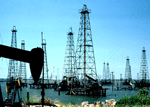Azerbaijan: Long-run policies towards social and economic development
Published on Thu, 2013-04-04 10:52
Despite that the poverty level in Azerbaijan decreased by 1.5 % and amounted to 7.6 % in 2011, share of poorest quintile in national income also diminished. Revenues from the oil sector could be allowed financing projects required to reach those aims by 2015. But interestingly that even in Azerbaijan receiving large revenues from oil, there wasn’t rapid increase in public funding for the social sector. The Government rather prefers to accumulate the surplus in the special oil fund and plan to use it to push forward big infrastructure projects. According to calculations of the experts of the National Budget Group (civil alliance for public finance monitoring), if to take 2013 budget of Azerbaijan in the equivalent of 100 USD, then out of every 100 USD, 45.80 USD will be spent for capital investments to main foundations, 14.20 for labor remuneration, 11.40 USD for other expenditures, only 8.80 USD for pensions and social benefits, 1.60 USD for subsidies and transfers, 1.50 USD for procurement of food products, 0.90 USD for medicines, winding accessories and materials. Anyway, under such general resource ceiling and current spending pattern, public funding for education, health, and environment may not be sufficient in order to achieve MDGs. Azerbaijan has one of the highest concentrations of Internally Displaced Persons (IDPs) per capita in the world. Most of these IDPs were forcibly displaced in the years 1988-94 during conflict between Armenia and Azerbaijan over the Nagorno-Karabakh region of Azerbaijan. The IDPs were settled into new locations in Azerbaijan. IDPs are a vulnerable group whose impoverishment in the immediate aftermath of their forced movement was an economic shock that has been hard to overcome, especially since they lost access to significant assets. IDPs are particularly vulnerable in a range of areas: they are more likely to be poor, suffer worse living conditions, and display lower employment rates and higher work inactivity rates than the non-displaced. Poverty rates among IDPs are 25.0 % compared to 20.1 % among the non-displaced. 42.5 % of IDPs live in one-room accommodations compared to only 9.1 % of non IDPs. IDP families have an average of 36 square meters of living space compared to 74 square meters for local families. In spite of all taken measures by State Committee of the Republic of Azerbaijan on Deals of Refugees and Internally Displaced Persons, the humanitarian and social condition of refugees and IDPs is still complicated. At present 87631 refugees live in hostels, more than 25550 of them live in camps, 28 thousand are in Finnish type houses, and the rest live in state buildings, incomplete buildings, sanatoriums, boarding houses and in other places under insufferable circumstances, which do not meet sanitary norms. Rates of access to electricity, hot water, and bathrooms are worse among the displaced than non-displaced. Employment rates among IDPs are 40.1 % compared to 57.4 among the non-displaced. Work inactivity rates among IDPs are 54.3 % compared to 36.2 % among the non-displaced. Source: Azerbaijan Social Watch 2013 National Report |
SUSCRIBE TO OUR NEWSLETTER



